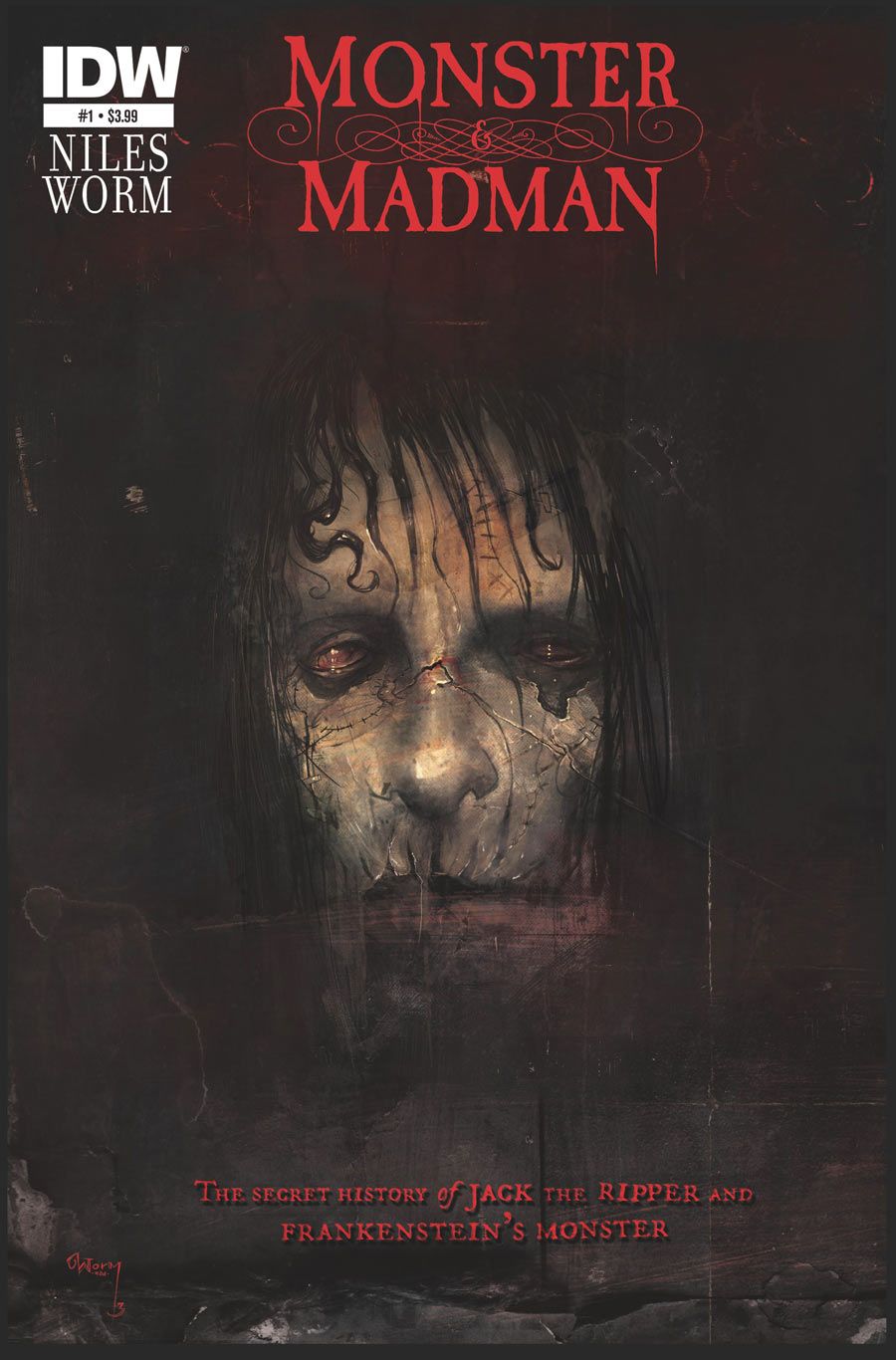It's the monster who gets all of the page time in Steve Niles and Damien Worm's "Monster and Madman" #1, which is billed on the cover as "the secret history of Jack the Ripper and Frankenstein's monster." It's a clever idea, establishing a tie between one of literature's more horrific characters and a real-life serial killer who was a whole different kind of horrific, but the series' first issue doesn't quite get around to exploring it yet. Instead, the debut serves as an introductory, albeit necessary, explanation of how Frankenstein's monster actually survived his apparent demise, taking place not long after the conclusion of Mary Shelley's original novel.
Niles makes good use of it, though; his monster is one coming to better understand mortality, or in his case, potential immortality. Not just his own, but also that of others, and when presented with the opportunity to kill, his character further matures. Niles plays up the notion of a misunderstood monster living in a dark and opportunistic world, who somehow maintains a moral compass despite all of the dreariness and conniving around him. Niles appears to be setting up Frankenstein's monster as the good guy, especially since it's pretty hard to fathom Jack the Ripper filling that role.
Damien Worm, besides having the probably one of the coolest possible names for an artist of a horror comic, draws up fittingly dreary surroundings. The snowy, icy, northern climate where the creature escaped death is especially bleak, and his first subsequent encounter with a stranger ends violently, giving Worm the excuse to render bright splashes of red against white, not unlike the way Ben Templesmith did with Niles going back to "30 Days of Night" a decade ago. In fact, much of Worm's technique borrows from Templesmith, by way of drawing figures in shadowy, abstract forms and the preponderance of greyish backgrounds. While somewhat derivative, the technique works for both the locale and mood of the story, and the worst misgivings are the kind usually associated with this style: some individual panels take a moment of study to identify what it is that Worm is drawing. His layouts are clear enough, though, despite some excessively dark pages, and help in piecing together some of the less obvious happenings.
Frankenstein's monster as envisioned by Worm isn't the Boris Karloff archetype that's been cemented in pop culture for generations; instead, his pale, thin and long-haired incarnation is more modern Hot Topic than classic Hollywood. There are very few clear shots of the character; one of the most detailed is the very first panel, which gives readers a look at the monster to squelch any pending and ultimately distracting curiosity. This allows Niles and Worm to focus on the surrounding events that serve to define the relevant aspects of the character, namely his mindset and ethics, more so than his appearance.
It's a somber and somewhat slow start to the series, but the introspective on a character who's both dead yet escaped death is interesting enough to support the issue. "Monster and Madman" #1 holds promise for the remainder of the series, with an unlikely but original premise that has enough of a hook to keep readers on the lookout for issue #2.

